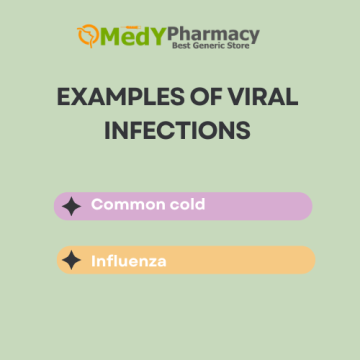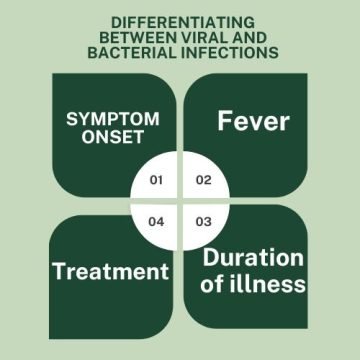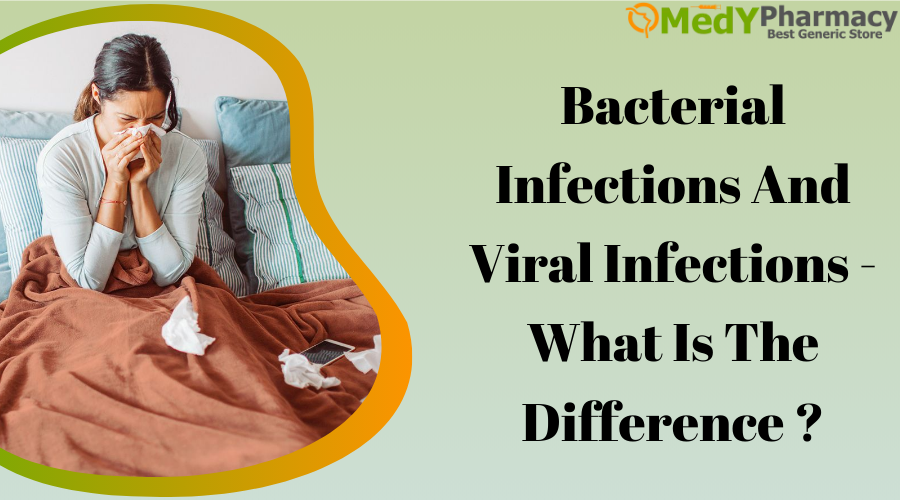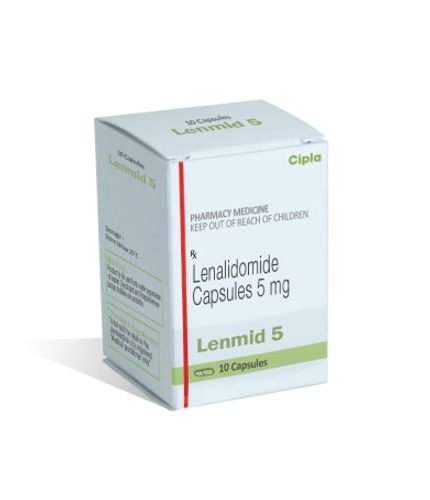Introduction:
In the field of illnesses and infections, two prevalent terminology are “viral” and “bacterial.” Understanding the distinction between viral and bacterial infections is essential for accurate diagnosis and treatment.
These bacteria serve distinct roles in disease transmission in humans. In this post, we will look at the difference between viral and bacterial infections to help you make informed health decisions.
These are the causes of bacterial infections. These are the causes of viral infections. Antibiotics destroy or prevent many bacteria from developing, however, they do not treat viruses. Antiviral medications aid the body’s ability to eliminate certain infections.
These are infectious, and different pathogens can cause a variety of symptoms. Some illnesses may require the use of antibiotics or antiviral drugs, but others might be prevented through immunization.
What Are Viral Infections?
These are little infectious organisms that require a host cell to reproduce and cause diseases. They are not technically alive because they are unable to carry out metabolic activities alone. Instead, they hijack your cells’ reproductive mechanisms. Can affect any region of the body, ranging from a common cold to more serious disorders.
Viruses, like bacteria, are microscopic microorganisms. They, like bacteria, are highly diverse in terms of structure and appearance.
Viruses exist as parasites. This means that they need living cells or tissue to grow.
Can infect your body’s cells and use them to grow and multiply. Some viruses kill host cells as part of their life cycle.
What Are Bacterial Infections?
These are single-celled creatures capable of living and replicating on their own. Some bacteria are good and even necessary for our health, while others can cause a variety of illnesses in the human body. Antibiotics are often used to treat bacterial illnesses by targeting the bacteria’s cell structure or metabolism.
These are small creatures consisting of a single cell. They are quite diverse, with a wide range of forms and structural properties.
Bacteria may exist in practically any environment, including within or on the human body.
Only a few germs infect humans. These microorganisms are known as pathogens.
How Are Bacterial And Viral Illnesses Transmitted?
- Bacterial Transmissions
Many bacterial illnesses are infectious, which means that they can spread from person to person.
- Having close contact with someone who has a bacterial infection, including touching and kissing
- Contact with the body fluids of a person with an infection, particularly after a sexual encounter or when the person coughs or sneezes.
- Transmission from mother to kid during pregnancy or birth.
- Touching your face, nose, or mouth after coming into contact with bacteria-contaminated surfaces, such as doorknobs or faucet handles.
Can be spread not just from person to person, but also by the biting of an infected insect. Additionally, ingesting contaminated food or drink might cause an infection.
Common bacterial infections
- Strep Throat
- Urinary Tract Infection
- Bacterial Food Poisoning
- Gonorrhea
- Tuberculosis
- Bacterial Meningitis
- Cellulitis
- Lyme Disease
- Tetanus
- Viral Transmissions
Many viral infections, like bacterial ones, are infectious. They can be transmitted between people in many of the same ways.
- Keeping close contact with someone who has a viral infection.
- Possible sources of viral infection include contact with infected individuals, transfer from mother to child during pregnancy or birth, and contact with contaminated surfaces.
In addition, viral infections, like bacterial diseases, can be transmitted through the bite of an infected insect or by consuming contaminated food or drink.
Common Viral Infections
- Covid-19
- Influenza
- Common Cold
- Viral Gastroenteritis
- Chickenpox
- Measles
- Viral Meningitis
- Warts
- Human Immunodeficiency Virus
- Viral Hepatitis
- West Nile Virus
How Do Bacterial And Viral Illnesses Get Diagnosed?
How doctors diagnose viral and bacterial illnesses.
- Physical examination
- A history of symptoms
- Recent travel history.
- Current outbreaks or pandemics in your region
- Mucus, saliva, urine, or any other culture samples
Your physician may be able to identify your disease based on your medical history and symptoms.
Measles and chickenpox, for example, have distinct symptoms that can be identified with a simple physical check.
Furthermore, if a specific condition is now on the rise, your doctor will take that into account when making a diagnosis. One example is influenza, which creates seasonal epidemics in the cold months of the year.
If your doctor wants to discover what type of organism is causing your problem, they may collect a sample to culture.
- Blood
- Mucus or Sputum
- Urine
- Stool
- Skin
- Cerebral Spinal Fluid
When a microbe is cultured, your doctor can determine what is causing your symptoms. It can also help them evaluate which antibiotic will be most effective in treating your bacterial infection.
How Germs and Viruses Enter the Body
Pathogenic germs must enter the body before they can cause disease. Bacteria can get entry through a variety of methods, including:
- Cuts
- Contaminated water or food
- Inhaling inhaled droplets when an infected individual coughs or sneezes.
- Indirectly, by touching infected surfaces such as faucets, toilet handles, toys, and diapers.
Viruses are transferred from one person to another through:
- Coughs
- Sneezes
- Vomits
- Bite by diseased animals or insects
Sexual intercourse and sharing hypodermic needles might expose you to contaminated bodily fluids.
Forgetting to wash your hands after touching pets and animals is another way germs can enter your body through your mouth.
Diagnosing Bacterial vs. Viral Infections
A full blood count and cultures of the fluid in question are common tests used to help us diagnose a bacterial infection. This could be a spinal culture, urine culture, or blood culture.
Dehydration is indicated by decreased fluid intake, urine less than three times in 24 hours, or decreased tears when sobbing.
- Increased labor of breathing, including quick breathing, nostril flaring, and the utilization of rib, stomach, or neck muscles to breathe.
- Significantly diminished activity or responsiveness
- No improvement after 3-5 days.
Youngsters who are near other youngsters are more likely to contract infections. However, keep in mind that most children today will have viruses that require merely supportive treatment.
- Enzyme-Linked Immunosorbent Assay
This test can help detect several viruses, including HIV, as well as bacterial diseases like Lyme disease.
- Polymerase Chain Reaction
This test sequences microorganism DNA and can detect viral infections such as HPV as well as bacterial infections like Escherichia coli.
- Electron Microscopy
This imaging approach can be used to detect rare viral and bacterial diseases that require high resolution to identify. However, because electron microscopy is a costly diagnostic technology, physicians rarely seek it.
How Do You Cure Bacterial And Viral Infections?
- Treating viral infections
Many viral illnesses lack a specific treatment. Treatment is often aimed at reducing symptoms while your body works to eliminate the infection.
- Drink fluids to prevent dehydration.
- Getting lots of rest.
- Using over-the-counter pain drugs, such as acetaminophen (Tylenol) or ibuprofen (Motrin, Advil), to reduce aches, pains, and fever
- Taking over-the-counter decongestants to treat a runny or stuffy nose
- Using a throat lozenge to relieve a sore throat.
- Treating Bacterial Infections
Antibiotics come in a variety of forms, but they all aim to prevent bacteria from multiplying and dividing. They aren’t helpful against viral infections.
Antibiotics should only be prescribed to treat bacterial illnesses. However, these are frequently requested to treat viral infections. This is risky because overprescribing antibiotics can result in antibiotic resistance.
Antibiotic resistance develops when bacteria evolve to be able to withstand specific antibiotics. It can make treating a variety of bacterial illnesses more challenging.
If you’ve been prescribed antibiotics for a bacterial infection, finish the course even if you start feeling better after a few days. Skipping dosages can fail to destroy all harmful microorganisms.
How Long Do Viral And Bacterial Illnesses Last?
If you have a bacterial illness, it should go away within a week or two of antibiotic treatment. Even if you start feeling better, you must continue to take your medication; otherwise, the germs may return.
The duration of a viral infection is determined by the virus that causes it. The majority of respiratory viruses resolve within a week or two. Hepatitis can result in persistent health issues that last for years. HIV cannot be cured and is a lifelong condition, however, there are medications available to manage it.
How Can You Tell Whether An Infection Is Viral Or Bacterial?
It could be difficult to determine what is causing your illness. Your symptoms may help your doctor make a diagnosis. Your healthcare professional may collect a sample from you and submit it to the laboratory.
- Urine
- Poop
- Blood
- Skin
- Sputum
- The fluid that your eyeballs produce
If your internal organs are harmed, you may need X-rays, ultrasounds, MRIs, or CT scans.
If your doctor suspects you have a viral infection, you may require an X-ray, ultrasound, MRI, or CT scan to evaluate how your disease is impacting your body. However, scans and X-rays are unable to detect viral infections. To do so, your doctor may request a lab test for the virus, antigens, or antibodies in a sample of your body.
- Blood
- Spit
- Sputum
- Cells from inside your nose
- Skin
- Urine
- Poop (stool)
- CNS fluid
Viral Infection Characteristics and Symptoms
- The Nature of Viruses
These are extremely small, far smaller than bacteria. They are composed of genetic material (either DNA or RNA) enclosed in a protein shell known as a capsid. This genetic material contains the instructions for reproducing the virus.
- Transmission
Viral diseases are frequently contagious and can spread by direct contact, respiratory droplets, contaminated surfaces, or vectors such as insects. The flu virus, for example, spreads by respiratory droplets produced when an infected person sneezes or coughs, and it can live on surfaces for hours.
- Symptoms
Symptoms of a viral infection include fever, cough, sore throat, runny nose, and lethargy. However, the symptoms can differ significantly depending on the virus. For example, a human immunodeficiency virus (HIV) infection may not exhibit visible signs for several years, whereas a herpes simplex virus infection might cause painful sores.
- Treatment
Antiviral drugs are typically used to treat viral infections by inhibiting the virus’s capacity to reproduce. Antiviral medications, such as oseltamivir (Tamiflu), are used to treat influenza, whereas antiretroviral treatments are used to manage HIV. Vaccines are offered in some circumstances to help prevent viral infections.
Vaccines, such as the measles, mumps, and rubella (MMR) vaccination, stimulate the immune system to produce antibodies that can recognize and fight the virus if exposed in the future. Fildena, a recognized ED treatment, can help you improve your sexual performance and erections.
- Examples of Viral Infections

- Common cold
Rhinoviruses are frequently responsible for the common cold, which causes symptoms such as sneezing, coughing, and runny nose.
- Influenza
The influenza virus causes the flu, which causes symptoms like a high fever, body aches, and respiratory problems. Influenza is extremely contagious and spreads by respiratory droplets.
Bacterial Infections Characteristics and Symptoms
- Bacteria’s Nature
These are single-celled creatures with more complicated structures than viruses. They have a cell wall, a cell membrane, and DNA-based genetic material. These are self-sufficient organisms that can metabolize, develop, and reproduce. Some bacteria are healthy and play important roles in processes such as digestion, whereas others cause illnesses.
- Transmission
These are communicable, but they can also occur when the body’s natural defenses are weakened. Streptococcus bacteria, which cause strep throat, can be spread by respiratory droplets when an infected person coughs or sneezes.
- Treatment
These are commonly used to treat bacterial infections. Antibiotics destroy germs or restrict their growth. It is critical to complete the entire antibiotic course to avoid antibiotic resistance, which occurs when bacteria grow less susceptible to these drugs. Zudena 100 mg tablet provides firm, dependable erections, allowing you to reach your best sexual performance.
- Examples of Bacterial infections
- Strep throat
Streptococcus bacteria cause strep throat, which causes symptoms like a sore throat, fever, and difficulty swallowing. It is typically transmitted through respiratory droplets.
- Urinary Tract Infection (UTI)
Escherichia coli (E. coli) are a common cause of UTIs, which can cause frequent urine, pain, and discomfort. UTIs occur when germs from the rectal area enter the urethra and travel up the urinary system.
- Pneumonia
This is often caused by Streptococcus pneumonia or Haemophilus influenza, and symptoms include chest pain, a high fever, and trouble breathing. Bacterial pneumonia can develop when bacteria invade the lungs and cause illness. Sildigra 250mg, a powerful ED drug, ensures that erections endure longer and are stronger.
Is My Stomach Bug Viral Or Bacterial?
If you have nausea, diarrhea, or abdominal cramps, you most likely have a stomach bug. But is it a result of a viral or bacterial infection?
Gastroenteritis is an intestinal infection. It is transmitted by coming into contact with stool or vomit from an infected individual, frequently as a result of poor hand hygiene or hand-to-surface contact.
Food poisoning is a digestive tract infection brought on by eating contaminated food or liquids.
Viruses as well as bacteria can cause gastroenteritis and food poisoning. Regardless of the cause, with proper home care, your symptoms can often be resolved in 1 or 2 days.
Symptoms that last more than three days, induce bloody diarrhea, or result in severe dehydration may suggest a more serious infection that necessitates immediate medical attention.
Is My Cold Due To Bacteria Or Viruses?
A cold may induce a stuffy or runny nose, a scratchy throat, and a mild temperature, but is it bacterial or viral?
Several viruses cause the common cold, the most prevalent of which is rhinoviruses.
There isn’t much you can do to treat a cold other than wait it out and take over-the-counter drugs to alleviate symptoms.
In some situations, a secondary bacterial infection can occur during or after a cold.
- Sinus infections
- Ear infections
- Pneumonia
Vaccination against Viral Infection Is Not Always Possible
Many dangerous viral illnesses, including measles, mumps, hepatitis A, and hepatitis B, can be prevented with vaccines. The World Health Organization (WHO) led an intensive global vaccination program that effectively eradicated smallpox. However, some viruses, such as those that cause the common cold, can mutate from one person to the next. This is how an infection with the same virus might evade the immune system. Vaccination against these viruses is challenging since the viruses have already changed their shape by the time vaccines are developed.
Differentiating Between Viral and Bacterial Infections

- Symptom onset
Viral infections usually have a slow start of symptoms, but bacterial infections may appear rapidly. This variation in onset can aid healthcare professionals in making initial assessments and suggestions for testing or treatment. For example, the fast onset of severe painful throat and fever in strep throat is more likely due to bacterial infection.
- Fever
Both viral and bacterial infections can produce fever, although bacterial infections are more likely to cause a high fever. A persistent high fever could indicate a bacterial infection, such as bacterial pneumonia.
- Duration of illness
These are often short-lived, although bacterial infections might last longer. This information can help to inform treatment decisions and patient expectations.
Individuals suffering from viral bronchitis, for example, might expect their symptoms to resolve in a few weeks, whereas bacterial bronchitis may necessitate antibiotics and prolonged recovery time.
- Treatment
These are normally treated with antiviral drugs, whereas bacterial infections are treated with antibiotics. Understanding the optimum type of medication is crucial for effective therapy.
Misusing antibiotics to treat viral infections can lead to antibiotic resistance, posing a substantial public health risk. Poxet 60 is the finest choice for achieving good erections and treating ED.
Why Is It So Necessary To Distinguish Between The Two?
Molecular techniques are enhancing doctors’ ability to identify viral or bacterial infections more quickly and efficiently—the goal is for doctors to be able to test patients at the GP’s practice or in an emergency department, and quickly establish whether their illness is caused by a virus or bacterium.
It is critical to understand the distinction between a viral and bacterial infection so that doctors can treat the appropriate sickness and medications are not used excessively, contributing to the growth of antibiotic-resistant superbugs.
It’s also why you shouldn’t expect your doctor to prescribe antibiotics if you have a viral infection, like a cold.
Researchers at IMB are researching strategies to catch and identify germs from diseases in hours instead of days.
Is It More Difficult To Treat A Bacterial Or Viral Infection?
Bacterial infections can be treated using antibiotics. Antiviral medications are available for some viral diseases, but they will merely hasten your recovery. Viruses have to run their course. Some, like HIV, will never leave your body. The greatest approach is to avoid getting it in the first place. Vaccines can help to prevent the spread of several viruses.
Do Antibiotics Work For Viral Infections?
No. these are ineffective against viruses, and using antibiotics when you have a viral infection can cause bacteria to become drug-resistant. Viruses can sometimes cause bacterial infections. For example, a cold can cause fluid to accumulate in your respiratory system, and fluid in your ear can become bacterially infected. In that situation, an antibiotic will aid in the elimination of the bacterial infection. However, it will not affect the virus.
How Can You Avoid These Infections?
- Bacterial infections.
Good hygiene measures, such as frequent handwashing, correct food handling and preparation, and keeping the surroundings clean, can help avoid the spread of bacterial diseases. Some bacterial illnesses, such as tetanus and pertussis, can be prevented with immunization.
- Viral illnesses:
Vaccines are also an important preventative measure for many viral infections. Vaccines boost the immune system to recognize and fight certain viruses, lowering the likelihood and severity of illness. Other precautions include maintaining good hand cleanliness, avoiding close contact with infected people, and using proper protection to avoid sexually transmitted virus illnesses.
Get vaccinated for viral and bacterial illnesses, and keep your vaccination status up to date with boosters.
- Wash your hands frequently and thoroughly.
- When storing and preparing food, take food safety precautions.
- Avoid close encounters with wild animals.
- Always use a condom during every intimate interaction to practice safer sex.
- Do not share combs, toothbrushes, glasses, or straws.
It might be difficult to keep viral and bacterial illnesses from spreading. Many illnesses are infectious and can spread from person to person or through indirect contact before symptoms develop.
Understanding the distinction between viral and bacterial infections is critical for providing effective medical care. While both types of infections can cause a variety of symptoms, the bacteria, treatment, and duration of the sickness are separate.
Because antibiotic-resistant bacteria are becoming a global problem, Medypharmacy is studying the surface activity of bacteria at the molecular level and has found how they evade the human immune system.
























